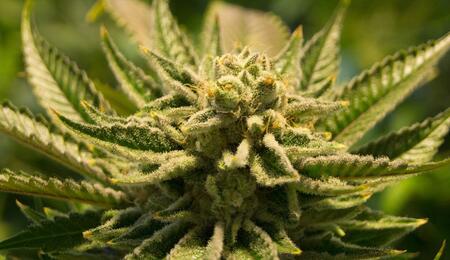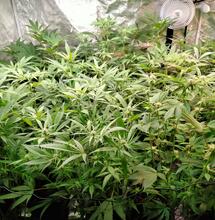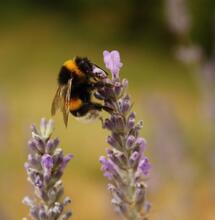Cannabis Nutrition: Macro and Micronutrients

Get comfortable, light up, and let us take a stroll among the nutrients. The dizzying array of rumors, facts, opinions, wives' tales, and science can easily overwhelm gentle vipers trying to make sense of how much of which nutrients to feed their plants. Well-formulated cannabis nutrition solutions are part heart, and part science.
The 'heart' portion comes from listening to your plants and finding what works best for both of you. In the absence of the threat that walks on two legs, cannabis can happily sprout, grow, flower, and reproduce in the wild, under a wide variety of conditions and available nutrients. As long as your favorite solution produces enough smoke for you to enjoy, exhale a sigh of contentment, and congratulate yourself on a job well done.
There are a lot of paths one can take to get to a given place, and there is usually more than one right answer. On the other hand, some answers are better than others, so let a little science guide your heart in making choices. Cannabis plants have a variety of nutrient needs, and if you do your part and meet those needs, she will do hers and reward you with smoke.
Cannabis Nutrition: Macro and Micronutrient
Water (H20)
Water is a critical requirement for proper plant health. While not technically a nutrient, but rather the transport agent for nutrients, water is an important requirement for growing healthy plants. Slight under-watering is less detrimental than slight over-watering, so if in doubt, run towards the dry side. The quality of the end solution is determined in part by the initial quality of the water used for the base liquid. If local water is of poor quality, reverse osmosis or other filters can be used to clean it.
Under-watered plants will droop. If they do, check the moisture level; if the medium is very dry, under-watering is the problem. If the media is very wet, over-watering is the trouble. Slightly dehydrated plants tend to spring back quickly with the return of moisture. Under-hydrating plants can cause potassium and calcium deficiencies.
“Plants exposed to over-watering may take a long time to recover, and are at greater risk for insect and fungal infections until they do„
Over-watered plants may also droop, but are distinguished by soggy media. Plants exposed to over-watering may take a long time to recover and are at greater risk for insect and fungal infections until they do. Over-watering can cause an iron deficiency.
Carbon Dioxide (CO2)
Carbon Dioxide supplies both carbon and oxygen to the plants. It is a naturally occurring gas in the atmosphere. The carbon is used by the plant as part of the photosynthetic process, to make sugars and other organic compounds.
CO2 is usually present in sufficient quantities in ambient air to prevent obvious deficiency symptoms. Benefits can often be seen with increases in available CO2. My recommended method of increasing local levels of carbon dioxide in your garden is to spend time on it. For an additional boost, take a friend and do some heavy breathing together.
Plants will generally show no ill effects from higher levels of carbon dioxide and can absorb it at high levels. However, high concentrations of CO2 can be dangerous to insects, animals, and gardeners, so use in moderation. Now, let's get down to other significant aspects of cannabis nutrition, micro, and macronutrients.
Cannabis Nutrition: Macronutrients
The nutrients cannabis plants use in the largest quantities are called macronutrients. They are nitrogen, phosphorus, potassium, calcium, magnesium, and sulfur. Fertilizers list the NPK values for the first three macronutrients.
The first of the three numbers indicate the percentage of nitrogen. Ammonium nitrate (NH4NO3) has an NPK rating of 34-0-0. Therefore 34% of the weight of the fertilizer is nitrogen, and 66% of the weight of the fertilizer is something else.
The second number is the amount of phosphorus by weight as if the phosphorus was expressed as phosphorus pentoxide (P2O5). This is true even if the phosphorus is in another form. Phosphate Rock with an NPK rating of 0-30-0 indicates that it contains sufficient phosphorous to create enough phosphorus pentoxide (P2O5) to equal 30% of the total weight.
The third number is potassium content by weight as if the potassium was expressed as potassium oxide (K2O). An NPK rating of 0-0-60 for potassium chloride denotes a potassium content equal to 60% potassium oxide.
NPK ratings are proportions, so a fertilizer with an NPK rating of 2-1-2 has the same relative proportion as a fertilizer made from the same ingredients at 4-2-4. The difference would only be in the percentage of fillers or in the concentration.
In cannabis gardens, nitrogen deficiency is the most common nutrient deficiency.
Nitrogen is important for the proper development of chlorophyll (the green in leaves) used in photosynthesis. Nitrogen compounds comprise from 40 to 50% of the dry matter of plant cells. It promotes large healthy foliage, absorption by roots, and proper plant development, and is used in chlorophyll, amino acids, proteins, and nucleic acids. Trees and shrubs absorb nitrogen directly from ammonium (NH4+) well, but Cannabis and vegetables respond better to nitrogen further processed by bacteria into nitrate (NO3‾). Bottom line, in cannabis gardens, nitrogen deficiency is the most common cannabis nutrition deficiency.
Nitrogen-deficient leaves will contain relatively little chlorophyll, and will thus tend to be pale green or yellow in color; plants will have slowed growth. Nitrogen is very mobile in plants, and this enables them to readily move supplies where they are most required. Such transference is common from old-growth to young growing tips when supplies are short.
This mobility and re-utilization of nitrogen explain why deficiency symptoms appear first in the older parts of plants, working their way up to the growing tips. This same type of 'symptom-creep' from bottom to top is common to all mobile nutrients.
An overabundance of nitrogen can cause accelerated growth at the expense of structural strength. Too much available nitrogen can also inhibit flowering in some plants.
Some common sources of nitrogen are potassium nitrate (13-0-44), ammonium nitrate (34-0-0), and sodium nitrate (16-0-0). Personal favorites include blood meal (12-0-0), alfalfa meal (2-1-2), and compost (3-1-2).
Phosphorus is required for photosynthesis, blooming, and root development. Also used to form nucleic acid, an essential part of living cells. Compounds of phosphorus are used in respiration and the efficient use of nitrogen. Important throughout the life cycle of the plant, use is elevated during flowering.
Phosphorus deficiencies usually manifest as a generalized under-performance of the plant. Leaves may develop a bluish tint. Phosphorus assists in nitrogen uptake, so symptoms of phosphorus deficiency are often similar to a nitrogen deficiency.
An overdose of phosphorus may cause iron and zinc deficiencies.
Sources of phosphorus include ammoniated superphosphate (5-50-0), ammonium phosphate (18-46-0), and animal manure (varies). My picks are bone meal (3-15-0) and rock phosphate (0-30-0).
Potassium is important for photosynthesis, carbohydrate and protein creation, and disease resistance. Used in the 'plumbing' of the plant - liquid movement within the plant, stems, roots, etc. - many enzymic reactions require potassium, and it assists in silica uptake.
Potassium deficiency often shows as a yellowing/browning/dying of the leaf edges and/or curled over leaves, followed by yellowing spots in the interior of the leaf face. Discolored spots may appear on the undersides of leaves. Deficiency symptoms show first on lower leaves as flecking or mottling on the leaf margins. Prolonged deficiency results in cell death along the leaf margins and the plants can show signs of wilt. These symptoms first display in older leaves and continue to work up through to the newer leaves if not corrected. Growth, root development, disease resistance, and bud size are reduced. However, overdosing potassium can result in calcium- and magnesium deficiencies.
Potassium chloride (0-0-60), potassium sulfate (0-0-50) and potassium nitrate (13-0-44) are all sources of potassium. I like powdered kelp (1-0-4), compost (3-1-2) and greensand (0-0-3).
The remaining three macronutrients are calcium, sulfur, and magnesium.
Calcium (Ca): Low mobility
Used in making cell walls, and in some enzyme reactions, calcium provides a base for the neutralization of organic acids. It facilitates the activities of growing points (meristems), especially with root tips. It may be of importance in nitrogen absorption. Using 'hard' water may supply enough calcium to meet plant needs.
Calcium deficiencies can show as dying or dead tissue on new leaves. Leaves may curl under. Overdoses of potassium or nitrogen can cause calcium deficiencies - even if calcium is available. Over-watering can also interfere with calcium uptake. Absorption slows in cooler weather. Root diseases and nematodes may cause calcium deficiencies. Overdoses of calcium may cause iron deficiencies. Calcium is often added as calcium carbonate (12% Ca) or calcium nitrate (12-0-0 17% Ca).
Sulfur (S): Very mobile
Used in amino acid and enzyme production, deficiency symptoms consist of a general yellowing of the leaves. This appears similar to a nitrogen deficiency, but starting in the upper leaves, not the lower leaves (as with a nitrogen deficiency).
Cannabis can generally tolerate quite high concentrations of sulfur, and overdosing is uncommon. However, over-application can lock out molybdenum, and hinder beneficial microbial life.
Sulfur is commonly paired with another nutrient. Potassium sulfate (0-0-50 18% S) and Epsom salts (13% S 10% Mg) both supply more than one nutrient. I prefer Epsom salts as it supplies both sulfur and magnesium in approximately correct proportions.
Magnesium (Mg): Very mobile
Magnesium is a key element in making chlorophyll and used in certain enzyme reactions. Magnesium also assists in phosphorous uptake and carbon fixation.
Deficiency symptoms consist of yellowing between veins, which can lead to dead patches in the affected areas, giving a mottled appearance. Signs of magnesium deficiency appear first on the oldest leaves and progress systematically toward the youngest leaves. Damage is similar in appearance to zinc- and chlorine deficiencies. Lack of magnesium can result in premature aging. Overdoses of calcium and potassium can block magnesium uptake. Epsom salts, agricultural lime, and magnesium carbonate can all supply magnesium.
Cannabis Nutrition: Micronutrients
The last six nutrients - iron, manganese, boron, zinc, copper, and molybdenum - are only used in very small amounts (and most in very, very small amounts). Iron, manganese, and boron are used in small doses. They are needed on the order of a hundredth as much as the macronutrients. Commercial micronutrient fertilizers often contain at least these three:
Iron (Fe): Low mobility
Iron is used to facilitate chlorophyll production and enzyme reactions. Iron chelates are soluble and aid in keeping iron in solution available for uptake.
Iron deficiency shows as upper leaf yellowing between the veins, which may progress to cell death of the affected leaves. New leaves come out bleached. Yellowing begins on the lower part of the leaflets. Iron deficiencies can look similar to a manganese deficiency. Overdoses of calcium, zinc, manganese, phosphorous, and copper can lock up iron and cause a deficiency. Basic (pH above seven) conditions or over-watering can also lock out iron uptake.
Manganese (Mn): Semi-mobile
Manganese is required for chlorophyll formation and enzyme reactions. Manganese deficiency consists of yellowing between green veins, similar to a magnesium deficiency but appearing first on the upper leaves, and more mosaic looking. Yellowing may turn brown as the leaf dies. Basic (pH above seven) environments can lock out manganese uptake.
Toxicity appears as marginal leaf necrosis. Manganese may decrease the solubility of iron by oxidation, so an overdose of manganese may lead to iron deficiency.
Boron (B): Low mobility
Boron aids in the creation and stabilization of the cell walls in plant cells. It is required for root tip development and new growth. It can delay the onset of calcium deficiency but is not a substitute for calcium. It tends to keep calcium soluble and may assist in the absorption of nitrogen.
Boron deficiency affects the growing and root tips first. Leaf tips curl under, yellow, and die; growth may be stunted and bushy. High pH may lock up boron.
Glossy-looking leaves may be an indication of boron overdose. Even smaller amounts of zinc, copper, and molybdenum are needed. They are used in quantities down to a thousandth as much as the macronutrients. Organic matter or soil usually has sufficient quantities of micronutrients to fulfill the needs of plants, but in a highly sterile hydroponic environment they may need to be added to the system. Only trace amounts of these are needed. For example, water running through house pipes has been known to pick up enough copper to meet the needs of Cannabis.
Zinc (Zn): Semi-mobile
Zinc is used to activate enzymic reactions and indoleacetic acid. Young leaves show yellowing between the veins. Sometimes a zinc deficiency can lead to plants with shortened internodes. Zinc deficiency may occur in cold, wet soils, or in basic pH conditions.
Overdoses of zinc may cause copper and iron deficiencies. Knowing what nutrients the plant needs is half the battle; knowing how much is the other half - also the more debated of the two. Reacting to deficiencies and overdoses is one way to get a feel for how much of which nutrient you should be adding to your solution. Another is to start with someone else's best shot at it, and then try to improve upon it yourself.
Many scientific studies of hydroponics (and nutrient manufacturers) use a variation of the 'Hoagland Solution'. First developed in the 1930s, this solution is in four parts:
Part A (potassium, calcium, nitrogen):
101.11 grams of Potassium Nitrate (KNO3)
236.16 grams Calcium Nitrate (Ca(NO3)2∙4H2O)
Mix with enough water to a total of two liters. Bottle and label.
Part B (nitrogen, phosphorus, magnesium, sulfur):
115.03 grams of Ammonium Hydrogen Phosphate (NH4H2PO4)
246.47 grams Magnesium Sulfate (MgSO4∙7H2O)
Mix with enough water to a total of two liters. Bottle and label.
Part C (boron, manganese, chlorine, zinc, sulfur, nitrogen, molybdenum, copper):
61.83 grams Boric Acid (H3BO3)
197.9 grams Manganese Chloride (MnCl2∙4H2O)
287.54 grams Zinc Sulfate (ZnSO4∙7H2O)
1235.95 grams Ammonium Molybdate Hydrate ((NH4)6Mo7O24∙4H2O)
249.7 grams Copper Sulfate (CuSO4∙5H2O)
Mix with enough water to a total of two liters. Bottle and label.
Part D (iron, chlorine):
Iron Chloride (FeCl3) or Iron Chelate (FeEDTA)
To prepare for use, add eight mL of parts A and B, and one mL of parts C and D, per liter of water.
Hoagland's solution addresses the nutrient needs of plants and is popular with laboratories and colleges. It looks good on paper - there are sound scientific reasons for the ingredients chosen, and most importantly, it works.
It does however have a serious drawback from the average home gardener's perspective. Namely, it's a bit of a pain to get the materials together and whip up a batch.
I'll spare you the math, but since NPK values are proportions, I calculated the proportions of the different nutrients in the legendary recipe above. Then I took an average of the results of several analyses of the nutrient contents of dried Cannabis plants and adjusted to the same phosphorus proportion as my first set. When I compared the results, I was surprised to find them very similar, enough to show the same valley in phosphorous need in comparison to nitrogen, potassium, and calcium. Using the data from the two sets, I came up with a nutrient proportion tailored to the needs of Cannabis.
Grubbycup's Ideal Recipe:
- N 3
- P 1
- K 3
- Ca 3
- S 0.9
- Mg 0.7
- Iron 0.03
- Manganese 0.007
- Boron 0.007
- Zinc 0.0007
- Copper 0.0004
- Molybdenum 0.0001
Combine materials as needed to reach the desired proportion. For example, to meet the desired NPK of 3-1-3 you could use any number of combinations:
- A fertilizer with 3-1-3 NPK.
- A fertilizer with 6-2-6 NPK at half strength.
- A fertilizer solution with 15 N mixed at 1/5th strength added to another fertilizer solution with 10-30 PK mixed at 1/10th strength.
I try to stick to approximately these values, but to be fair, I use the recipe more as a guideline than a mandate. I usually give a little bump up to phosphorus in flower, but nothing outlandish. Cannabis is usually pretty forgiving as long as you are in the correct general range.
Put most of your effort into meeting the needs of the top six - they are used in the largest quantities, and where a problem is most likely to develop. The next three may need adjusting depending on your sources for the top six; the last three are almost always present in sufficient quantities unless you have a very sterile setup.
There is a vast array of choices in which nutrient sources to use. Off-the-shelf commercial fertilizers are a very popular choice. They are easy to use, and in the right combinations can result in well-fed, well-nourished plants. Laboratories across the globe have used variations of the Hoagland Solution for decades. For the mad scientist types, there is even software available to help you work out how much of which chemical to use. Organic nutrients can be purchased or made/mixed at home.
Some cannabis nutrients, macro and micronutrients have faster absorption rates than others. Nitrogen in an available form, phosphorous, potassium, and manganese-all have fast uptake rates. These are the foods that nutrient solutions need added more often since the plant depletes them the quickest. Slower uptake nutrients (such as nitrogen awaiting bacterial breakdown, calcium, and boron) tend to stay in the solution/soil for a long time, once introduced. To account for this, add the fast uptake nutrients in small amounts, often; only occasionally add more of the slower uptake nutrients to prevent them from building up faster than the plant can use them.
There are a lot of different opinions among the Cannabis growing community as to which nutrients to use, when, and in what amounts. Get ten gardeners together and chances are fair that you'll wind up with ten different opinions on a variety of topics. Learning about nutrient solution composition and function can go a long way towards understanding how to take care of your plants well enough for them to help take care of you.
Peace, love and puka shells,
Grubbycup



